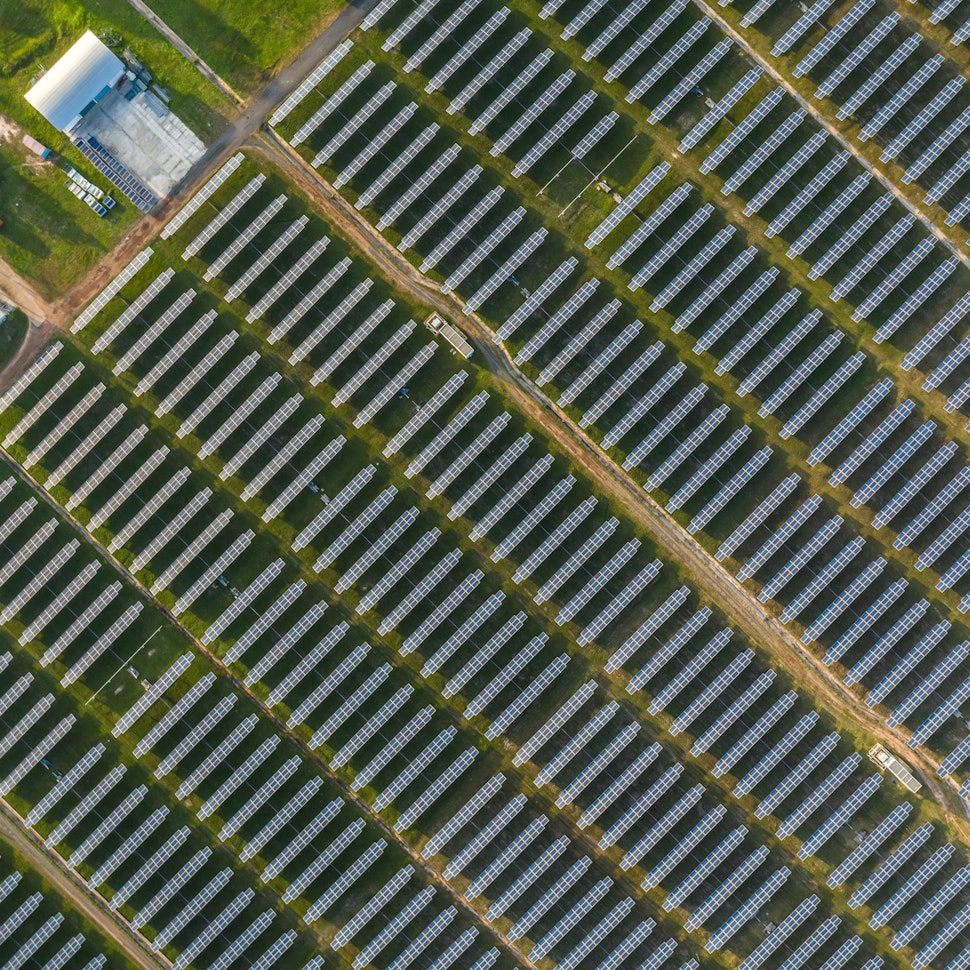- Solar energy blog
- Key takeaways from COP28
Key takeaways from COP28
Read our key takeaways from COP28 and learn about the next steps in the green energy transition


Laura Rodríguez
Territory Manager Oceania & Nordics
Laura is a renewable and software industry sales professional, currently working at RatedPower as Territory Manager Oceania & Nordics. With a background in International Business and International Trade, Laura previously worked in the business strategy area in various companies as well as as a market analyst for the Government of Spain in Australia.

Content
The end of 2023 marked the 28th edition of the Conference of the Parties (COP28), taking place at Expo City in Dubai. This latest conference saw over 70,000 delegates from all over the world attend, with nearly 200 exhibits present and scores of talks and events.
In this blog, we’ll be going over our key takeaways from COP28 and what they might mean for the future of climate change action and renewable energy. Let’s jump in.
What is the UN climate conference, COP?
The COP is an annual conference held by the United Nations (UN) to address climate change. First held back in 1995 in Berlin, the COP takes place in a different location each year across the five UN regions, Africa, Asia, Latin America and the Caribbean, Central and Eastern Europe and Western Europe, and Others.
The purpose of the COP is for UN member states to meet and assess the impact that climate change initiatives are having, formalize plans for future actions, and pass legislation to support those actions. Decisions are made by consensus, with every member state having an equal weighting of voting rights.
Each year, the COP lays out a set of goals to be achieved and works towards achieving said goals. For example, at COP27, held in Sharm El Sheikh, Egypt in 2022, one of the key goals was to assist developing nations with financial aid for the fight against climate change. As a result, a fund was established to help nations mitigate the losses and damage caused by climate change.
With this in mind, let’s take a look at our key takeaways from COP28.

Source: UNFCCC flickr by Anthony Fleyhan
Climate action: The Global Stocktake
By far the most exciting thing to come out of COP28 was the first “Global Stocktake.” Delegates from almost 200 nations agreed for the first time to begin transitioning away from fossil fuels and towards renewable technologies. The agreement stipulated that investment in renewables must be tripled and for the first time specifically pointed to fossil fuels as the main driver of climate change.
UN Climate Change Executive Secretary, Simon Stiell said in his closing speech that this agreement marks “the beginning of the end” for fossil fuels, as we saw a unanimous agreement by the delegates to ramp up the green energy transition.
Still, questions remain about whether the Global Stocktake and COP28 went far enough. Yes, fossil fuels were explicitly named for the first time and consensus was reached to move towards renewable energy. However, the final text did not go as far as to pledge a phase-out of fossil fuels but in some cases to phase-down, a step that must be taken if climate goals are to be reached.
Some countries saw this as a compromise and were hoping for a more concrete condemnation of fossil fuels and the wider industry. This is a good first step but more work is needed.
The Loss and Damage Fund
As previously mentioned, one of the key outcomes of COP27 was the introduction of the Loss and Damage Fund to assist developing nations with the costs caused by climate change. COP28 built on the previous year’s agreement by committing $725 million to the fund.
Again, while this is a step in the right direction, the amount of money pledged is a drop in the ocean compared with the scale of the issue at hand. In fact, the COP28 final text acknowledges this disparity in financing currently available.
It has been agreed that at COP29, taking place in 2024, the New Collective Quantified Goal will be adopted from a floor of $100 billion per year to increase climate spending with the needs of developing nations at the forefront. Financing looks set to be a continuing challenge in the future with the amount of money required meaning that it is unlikely that any changes will happen quickly but, at least for now, they do seem to be happening.
Nature-based solutions
Another positive takeaway from COP28 was the focus on nature-based solutions to help protect and restore the natural world. During the Nature, Land Use, and Ocean Day, $186.6 million of new financing was announced to help protect mangroves, forests, and the oceans.
This built on the World Climate Action Summit held at the conference, where $2.5 billion was pledged to protect and restore nature. Additionally, a joint statement between the COP28 Presidency and the People’s Republic of China signaled an increasing global commitment to collaboration and deployment of nature-based solutions, which will be crucial if we hope to roll back the effects of climate change.
A key cornerstone of these nature-based solutions is the Mangrove Alliance for Climate (MAC) introduced by the UAE and Indonesia at COP27. Since its introduction, 30 countries have joined, with 21 countries also endorsing the Mangrove Breakthrough which aims to restore and protect 15 million hectares of mangroves across the world each year.

Source: UNFCCC flickr by Anthony Fleyhan
The Oil and Gas Decarbonization Charter
It was announced at COP28 that 50 leading oil and gas companies had joined the Oil and Gas Decarbonization Charter, marking a significant milestone in the green energy transition. Under the Charter, these companies have committed to achieving net zero by 2050, eliminating routine flaring by 2030, and achieving near-zero upstream methane emissions.
With the signatory companies comprising over 40% of global oil production and 60% of the signatories being national oil companies, the agreement represents the largest number of national oil companies to ever commit to a decarbonization initiative, many for the first time.
This a good first step but wider signup to the scheme will be required if climate goals are to be met and the 1.5C goal is to be achieved.
Learn how utility-scale solar software is driving the evolution of this industry in our eBook: How solar software delivers ROI. Through insightful interviews with customers worldwide, we explore how their workflows have been completely transformed, thanks to the power of intelligent connections across the renewable asset lifecycle.
Closing thoughts for tacking the climate crisis
Overall, there are a lot of positives to take away from COP28. In particular, the focus on renewable energy and the explicit acknowledgement of the negative impacts of fossil fuels are refreshing to see, if long overdue.
However, there is a strong argument to be made that many, if not all, of the steps taken at COP28 did not go far enough. It is difficult to mobilize so many nations and release the finances required to make systemic change but climate change is not slowing down. Unless we take more drastic measures and increase the velocity at which changes are made, it may be too late.
Head over to the RatedPower resources page for more on the renewable energy sector and find out how solar PV technology is leading the charge in the fight against climate change.
Latest stories
Related posts
Market analysis
Powering through the peak: Why solar + storage is gaining momentum in MENAT
Discover how MENAT is building a functioning solar economy and why rising peak demand during extreme heat is squeezing its energy architecture.
Updated 11 DEC, 25


Market analysis
The rise of utility-scale PV + storage plants in Italy
Discover how Italy’s latest policies and auctions are driving utility-scale solar and battery storage projects to meet ambitious 2030 targets.
Updated 4 DEC, 25

Market analysis
From sun to socket: What Iberia’s grid needs to handle 2030 renewable targets
Discover how Spain and Portugal are upgrading their grids to meet ambitious renewable targets and prevent future blackouts.
Updated 25 NOV, 25

- RatedPower
- Solar energy blog
- Key takeaways from COP28
 Watch a demo
Watch a demo Ask our AI Product Expert
Ask our AI Product Expert
